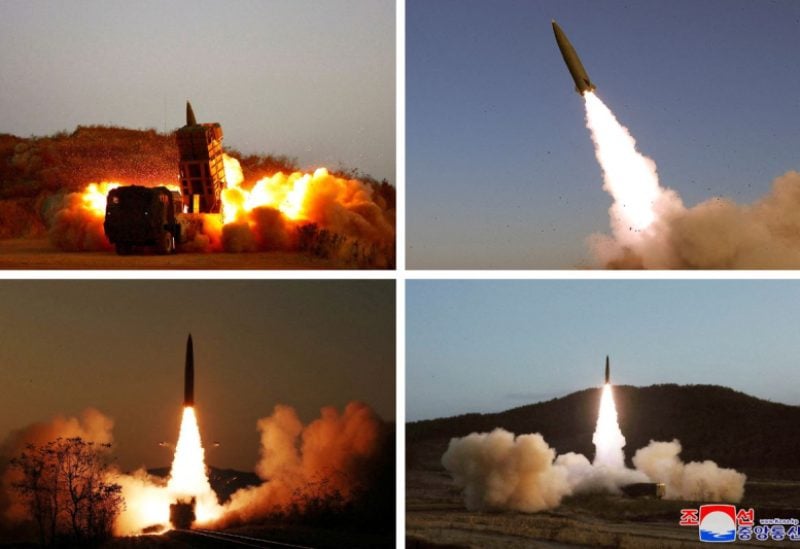
Recent North Korean missile tests are pictured in this undated combination photo taken at undisclosed locations and released on November 7, 2022 by North Korea's Korean Central News Agency (KCNA). KCNA via REUTERS
South Korea’s defense ministry said on Tuesday that debris from a North Korean missile recovered in South Korean waters was identified as parts of a Soviet-era SA-5 surface-to-air missile.
The Joint Chiefs of Staff (JCS) in Seoul announced on Monday that an underwater probe conducted by a South Korean navy ship had recovered a portion of a North Korean short-range ballistic missile (SRBM) fired last week.
Military analysis, however, showed the piece, about 3 metres (3.3 yards) long and 2 metres wide, was a part of an SA-5 missile, the defence ministry said, citing its appearance and features.
The ministry strongly condemned the missile launch, calling it a breach of a 2018 inter-Korean military pact banning any activities stoking border tensions.
“This SA-5 missile launch was a clearly deliberate, intentional provocation,” it said in a statement. “The SA-5 also has characteristics of a surface-to-surface missile, and Russia has used similar missiles in Ukraine for surface-to-surface attacks.”
The debris came after North Korea test-fired multiple missiles last week, including a possible failed intercontinental ballistic missile (ICBM), protesting against joint air drills by South Korea and the United States.
It was the first time a North Korean ballistic missile had landed near South Korean waters.
North Korea’s military said the launches were simulated strikes on South Korea and the United States, criticising their exercises as an “dangerous, aggressive war drill.”
The SA-5 is an air defence missile originally designed by the Soviet Union, where it was designated the S-200, to shoot down strategic bombers and other high-altitude targets.
The missile was exported around the world, and is still in service in at least a dozen countries, according to the Center for Strategic and International Studies’ Missile Defense Project.
North Korea took delivery of SA-5 systems in the mid-1980s, according to “The Armed Forces of North Korea: On the Path of Songun”, a 2020 survey by Dutch researchers.
“Two sites equipped with these very long-ranged systems cover the entirety of North Korean airspace as well as a sizeable chunk of that of the South,” the researchers wrote.
“However, having been designed to counter strategic aircraft, their use against modern fast jets such as the F-15 and F-16 is questionable to say the least.”